  
 |
|
|
|
|
|
|
|
|
 |
| |
| |
| Year: |
1987 |
HS-PX101 |

|
|
|
| |
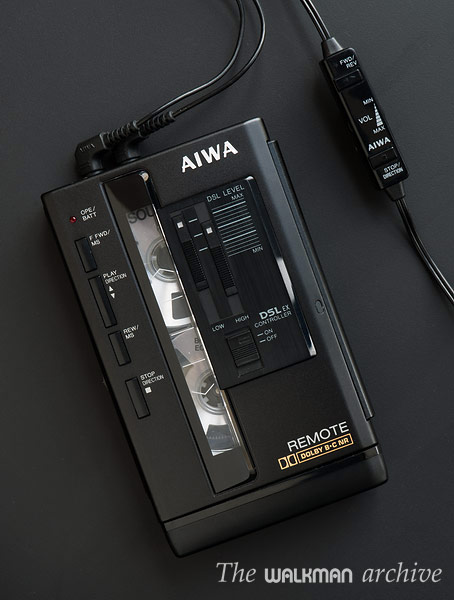 |
|
| |
|
|
| CONSTRUCTION
AND FUNCTIONS |
| Housing: |
Metallic |
| Color and
finish: |
Black, White, Grey
(last two are extremely rare) |
| Tape transport: |
IC Logic |
| Radio: |
 |
| Recorder: |
 |
| Remote control: |
 |
| Auto reverse: |
 |
| Battery: |
AAAx2 or battery
PB-1
|
|
| Ext.
compartment: |
 |
| Volume limiter: |
 |
| Blank skip: |
 |
| Case: |
PVC |
| Charger: |
 |
| Price: |
1988: ?
2010: 150$ |
| Availability: |
Scarce. |
| Others: |
|
|
|
|
| |
| |

A BRIEF DESCRIPTION
The PX101 probably represent
AIWA's first try to build a real competitor to
the good sounding DD machines from SONY, specially to the DD100 Boodo Khan. With
Dolby C, parametric DLS-EX and high quality headphones,
this walkman was announced as being the "world's
best sounding personal stereo" at the
time, back in 1987.
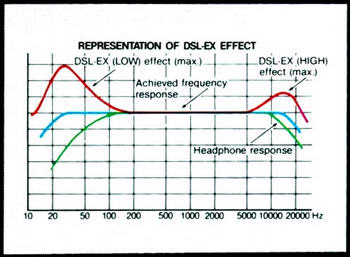
AIWA's DSL explanation, taken from the '88
Headphone Stereo catalogue (page 6).
It's probably one of the best sounding stereos
from AIWA (only the PX303 and the PX1000 achieves
similar performance, probably) and it's design
is very stylish, with feather-touch operation
buttons on the door.
The PX101 was also one of the first AIWA to
have a remote (first one was the G08, three years
before), that it's connected to a second 3.5mm
jack, beside the headphones jack. A few years
after these two jacks become one.
This model can be powered, like many other AIWAs,
from an acid gumstick battery PB-1 (which these days
are all dead) or with a pair of AAA.
CONTEXT
In 1987, no other brand
had a true competitor to PX101; only the SONY DD100 Boodo Khan, which remained the same for
three years could achieve a comparable sound
quality (in fact, probably with less wow&flutter),
but with worst equalization. So I
can say that the PX101 was the absolutely top
player in the world that year, with a size only
a bit bigger than the WM-101 and a sound quality
and equalization options much better.
One year later, SONY released the famous 701C, which was a closer competitor to the PX101, as it has a similar size, logic control, Dolby C and Mega-bass.
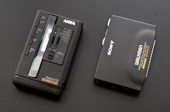
|
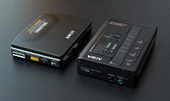 |
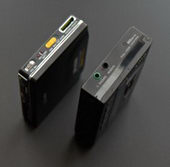
|
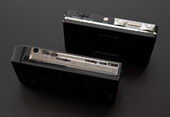
|
| The AIWA PX101 and the SONY 701C, closer competitors. |
|
Upper controls |
Side controls. |
NOTE: If you have any useful
info about this model, you can collaborate with
us if you want to. Please send us an email and
share your info. We will update the page with
it.
|
|
|
| |
|

For rating the sound quality, we use a pair of
high quality Sennheiser HD 280 Pro headphones,
and a test tape (SONY UX-Pro) that has been recorded with a high-end deck (a specially modified and upgraded SONY D6C by Dr Walkman in Italy). If I tell you that this small deck performs almost at the same level as a Nakamichi Dragon, and it records even better in some cases, you probably will say I'm exaggerating, but... believe me: I'm not (and yes, I have a Dragon).
The audio tests include an objective test and a subjective test. The results of the first one are shown in the graphs and data; the results of the second one, however, are a personal opinion and they're
not intended to be a precision rating. For more information about ho do I perform all test, please take a read on this article.
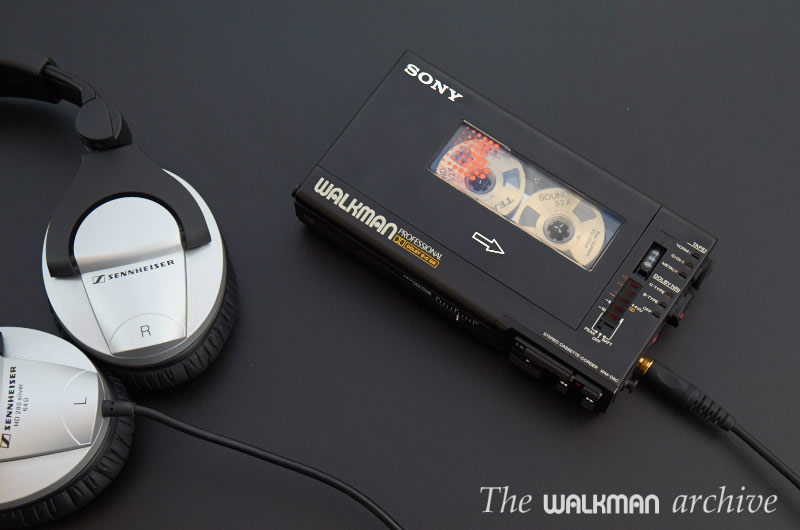
The SONY D6C, a superb recorder
Before rating this model, it was taken to a
professional technician for examine, repair and
fine adjusting. Remember these are old machines
and internal belts stops working properly after
some time. Of course, head and rollers have been
carefully cleaned and demagnetized before testing.
The PX101 is a strong performer, without doubt at all. I tested it with and without Dolby; with and without DSL and the performance is excellent.
The level of detail is awesome for such a small player, specially taken in count that it doesn't have an amorphous head or special sound processing like BBE. The highs are very crisp an detailed, mids are open and well spatialized. The only small problem is that the response of the bass is a bit low without DSL, and it's a bit difficult to set precisely with this system. But once set is excellent.
The W&F is low enough so you can barely notice any effect, even with classic music (piano, violin...).
| Frecuency response |
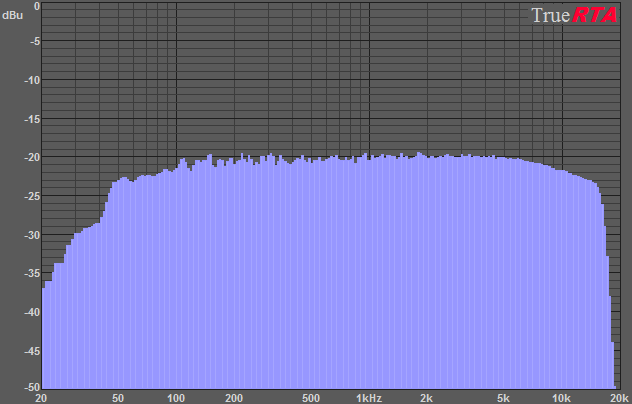
The standard head of the PX101 gives pretty good performance, even being not Amorphous or HX. Only a slight lack of bass is perceived in this graph. |
| |
| Effect of the bass enhancing system |
|
The parametric DSL offers excellent enhancement for both bass and treble. The Low slider has the maximun effect at 60-70 Hz, and the High, at 10 kHz. Both help so much to modify the response curve until giving a very pleasant sound. The Low slider has a maximum huge effect of about 20dB!
With a good recording, I only needed to set the DSL Low a bit high (about 10dB) and let the High at 0 to
enjoy a lot my reference recording in a SONY UX Pro.
The only problem is that the Low slider is poorly distributed, because at 50% it only gives about
10% of the effect. In the last two steps of the scale is concentrated 70% of the bass effect, making it very difficult to set precisely. |
| |
| Background hiss and noise reduction |
|
*: The original FRC is measured with a recording without Dolby; the ones with Dolby were each measured with recordings made with the same Dolby system measured.
Although the graphs show that there's not so much gain at 15 kHz, the reality is that the sound is excellent: very crisp and detailed, and wide open. Without Dolby, the hiss is clearly heard with classical or soul music. With Dolby B, you gain 10dB (that's a lot!) and the scene changes completely, but only regarding the hiss. The sound is excellent; very clear and crisp. I detected some spatial processing when DSL is activated. Maybe some delay between channels that makes the stereo enphasized... (I'm not sure).
With Dolby C,
although it's not under 70dB, it's very close. You can barely hear the background hiss with appropiate music (like soul, jazz, classic). The level of detail is simply excellent and the highs are at the same level than without Dolby (in fact, curves show that they are a bit higher!).
|
| |
| |
Wow & Flutter: |
0,156% (RMS) |
|
| |
|
| |
| |

So finally I combined all data into a single graph, to let us quickly see all the measurements about it:
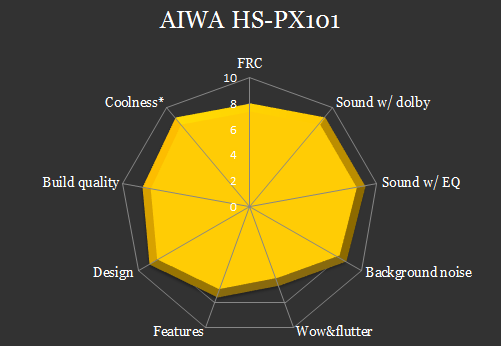
AIWA HS-PX101 final rating.
Undoubtely, the PX101 is a high-quality player. The design is very elegant and the body, robust. The sound quality has not so low wow&flutter as the SONY alternative, the SONY Boodo Khan, but it has more equalization posibilities and far more features. Remember that, back 1987, it was the most advanced player on earth...
|
|
|
| |
|

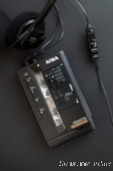
|
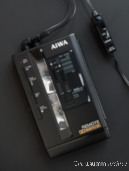 |
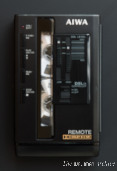
|
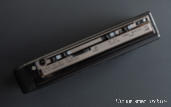
|
| PX101 came with a pair of good headphones, like the HP-MR1. |
|
|
|
| |
|
|
|
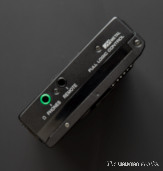
|
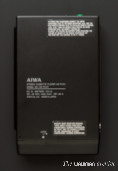 |
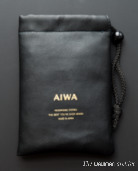
|
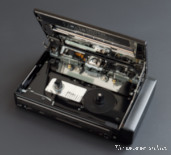
|
| |
|
AIWA's PX101 case |
The head is yet standard (HX Amorphous was not released yet). |
| |
|
|
|
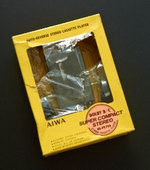
|
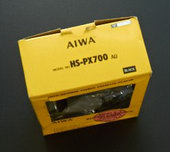 |
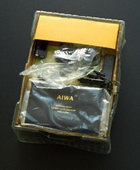
|
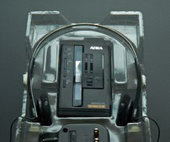
|
| The original box. Sad that it's a bit bended. |
|
Contents of the box. |
The player inside, brand new never used. |
| |
|
|
|
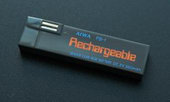
|
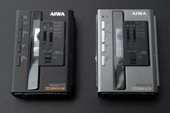 |
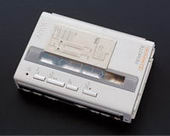
|
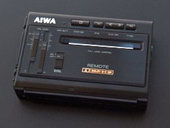
|
| The PB-1 battery. |
There is an extremely rare grey version of the PX101, only released in asian markets. |
The white PX10, extremely rare. |
The AIWA PX-20, a special version only released in Asia.
It's almost identical, except for the addition of a HX Amorphous head. |
| |
|
|
|
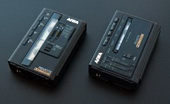
|
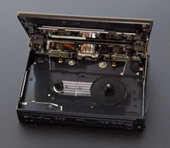
|

|
|
| Both the PX101 and the PX20. |
The HX head of the PX20. |
The complete PX101 line, with the addition of the ultra-rare Kenwood CP-R9.
To have all these models joined is one of the rarest walkman group in the world. |
|
| |

We haven't any info about licensed
models from other brands. If you know anyone, please
send us an email to share
the info, and we will update the page.
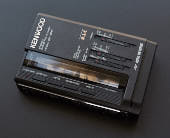
|
|
|
The Kenwood CP-9RC, an ultra-rare unit.
It has the same features, except DSL and Dolby. |
|
|
| |
|
| |
|

|
| |
Did you like this site?
This site is free and completely mantained only by me. However, it would be a nice help if you do a donation (even small). You can do it using Paypal (it's secure and fast). It will help me continue improving this site and keeping alive the memory of those loving walkmans for future generations.
|
| |

| BBE |
Barcus Berry Electronics, the name of the actual BBE
Sound, Inc. |
| DSL |
Dynamic Sound Loudness |
| DSL-EX |
Dynamic Sound Loudness EXtreme |
| HX |
Headroom Extended |
| MS |
Music Search |
| PLSS |
Private Listening Sound System |
| |
|
|
|
|
 |
|
|
|
|
|
|
|
|
 |
|
![]()
![]()
![]()